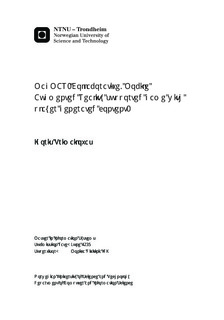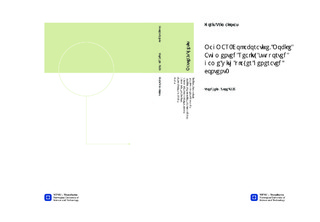| dc.contributor.advisor | Divitini, Monica | nb_NO |
| dc.contributor.author | Trimailovas, Igoris | nb_NO |
| dc.date.accessioned | 2014-12-19T13:40:55Z | |
| dc.date.available | 2014-12-19T13:40:55Z | |
| dc.date.created | 2013-11-12 | nb_NO |
| dc.date.issued | 2013 | nb_NO |
| dc.identifier | 663778 | nb_NO |
| dc.identifier | ntnudaim:9752 | nb_NO |
| dc.identifier.uri | http://hdl.handle.net/11250/253555 | |
| dc.description.abstract | Playing games in the museums enabled teachers to engage young museum visitors in the museum experience more deeply and made the place seem more fun. Aim of these games is to encourage the young visitors to investigate the museum on their own and learn some new information in more informal way. However these games usually have predefined content and are played using pen and paper, both becoming less appealing to the younger generation.This work aims at investigating how todays technologies can make these games more appealing to the younger generation while still providing some level of educational content. In particular the main goal is to study if removing the predefined content from a collaborative game and allowing the players to create their own game content will provide sufficient levels of motivation and engagement for the intended end users. Secondary goal is to study if Mobile Augmented Reality is accepted and useful technology to create a link between real and digital worlds in a museum setting.The outcome of this work is an analysis of a game that allows the players to create their own game content, connected to the particular museum the game is played in and an implementation of such a game that uses Augmented Reality as a link between digital and real world. Followed by analysis of a Web Interface that allows the supervisor of the game to control some of the content and monitor the players game progress in real time. A detailed implementation documentation of the prototype is provided that supports the provided storyboard. A usability study was performed to reveal limitation of the prototype and the design of the game itself. The game prototype as well as the prototype of the Web interface were used in a field experiment with intended end users at the Museo Del 900 in Milan. The results of the field experiment were the basis for the project evaluation.A workshop paper based on the work done in this thesis has been submitted at the MasIE workshop in collaboration with my supervisor Monica Divitini, my co-advisor Ines Di Loreto and Micaela Mander.The conclusions of the work might be of use to researchers working on a similar problems or might serve as a base for longitudinal research to assess academical gains of such an application. | nb_NO |
| dc.language | eng | nb_NO |
| dc.publisher | Institutt for datateknikk og informasjonsvitenskap | nb_NO |
| dc.title | MagMAR. Collaborative, Mobile Augmented Reality supported game with player generated content. | nb_NO |
| dc.type | Master thesis | nb_NO |
| dc.source.pagenumber | 117 | nb_NO |
| dc.contributor.department | Norges teknisk-naturvitenskapelige universitet, Fakultet for informasjonsteknologi, matematikk og elektroteknikk, Institutt for datateknikk og informasjonsvitenskap | nb_NO |

